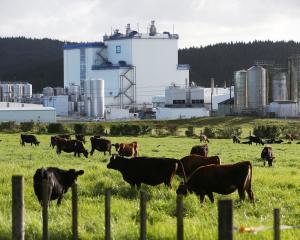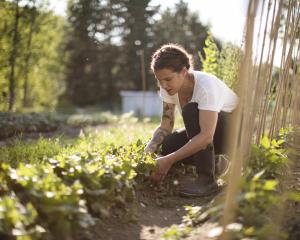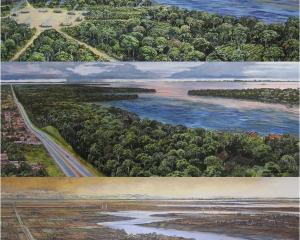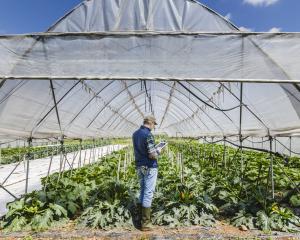

Those budgets are designed to put us on track to achieve net zero CO2 emissions by 2050 and to reduce our biological emissions (primarily from livestock) by 24-47% by 2050.
As a starting point, our 2018 emissions were 45.5Mt of CO2-e (the long lived gasses) and 1.34Mt of CH4 (biogenic methane primarily from livestock digestion). The commission’s analysis suggests that, based on current policies, we will miss our net-zero target by 6.3Mt of CO2-e and only achieve a 12% reduction in biologic emissions.
This is a significant gap and a clear message from the report is that what we are doing (and have been doing) is far from sufficient. We need to step up our ambition, change what we do and how we do it.
What does this mean in the agrifood space? Land use is identified as one of the key sectors for emission reductions (alongside transportation, waste and heat, industry and power). Agriculture accounts for about 90% of our methane emissions and 18% of our long-lived gases.
You could expect that reducing those emissions would require significant changes to food and agriculture in Aotearoa New Zealand, and that the farm sector could see this as yet another challenge that threatens their operations, business or livelihoods by imposing additional regulatory hurdles around their practices and their ability to make a living.
But the commission suggests nothing drastic has to change for our agrifood sector — this in contrast to its recommendations for fundamental changes to decarbonise the rest of the economy.
It suggests that in agrifood, we can rely on existing technologies, further support existing practices that drive efficiency gains, make subtle changes to land use by planting trees on marginal land or shift some land use towards horticulture, all of which might result in a slight decrease in stocking levels but still maintain current production levels.
The draft advice provides a decent starting point and it is a good first step to bringing agriculture into our emission reduction framework. It is focused on emission reductions that are both technically and economically achievable over the time period.
The commission’s modelling suggests that applying existing farm management best practice can get us to the lower end of our methane targets (24% reduction) and the development and wide adoption of new technologies (methane inhibitors added to feed, methane vaccines or low emission breeding programmes) could allow us to reach the upper end (47% reduction) without a significant impact to existing production levels. If these technologies do not materialise, we will need to significantly reduce stocking levels and make more significant changes to land use to achieve deeper emission reductions.
It is not radical or overly ambitious. It sets out emission budgets that provide a path for meeting our 2035 and 2050 targets with minimal impacts on agriculture production levels. The report is very clear that the status quo is not an option and that we cannot rely on offsets by tree planting to achieve net zero by 2050. We have to actually reduce our emissions. If we want to increase production levels (e.g., by increasing stock numbers), we need to find additional ways of making more significant, deeper and more difficult emission reductions.
So it is a good start for putting us on the path to meet our 2050 targets. However, the sectoral analysis provided by the Climate Change Commission does not really account for the interconnections and relationships that make up the systems in which these sectors operate. For example, it assumes that the bulk of the policy interventions, technologies and shifts in practice will occur on the supply side, at the site of production, on the farm. It fails to account for the potential ways that demand-side interventions might also lead to reduced emissions from agriculture and food, namely through shifting diets.
Might a global diet transition also contribute to land use change and thus a changing emission profile?
A recent report in The Guardian highlighted how a shift to more plant-based diets is crucial for saving global wildlife.
What about shifts in domestic food demand? To be fair, it would be difficult to insert these shifts into the commission’s modelling work. It is challenging to quantify these impacts and there is so much uncertainty, but acknowledging the role of change across the food system would reinforce the message that it is not just farmers that need to shoulder this burden.
Farmers need support in this transition, it is their livelihoods that are at stake. But it is not just farmers who need support. We also need to be thinking about how changes to our agrifood sector might impact our ability to access food.
There are already shameful numbers of people in New Zealand who are hungry. Can we effectively decarbonise the agrifood sector and ensure that the benefits of climate friendly meals are accessible to everyone by addressing food security and food poverty alongside efforts to reduce emissions?
We all have a role to play and an interest in supporting a more climate resilient food system.
- Sean Connelly is a senior lecturer in the University of Otago School of Geography.
Have your say
Consultation on the Climate Change Commission’s draft advice is open until March 14.
Go to www.climatecommission.govt.nz.
Comments
This radical ideology fails to consider the vital part animals (in particular, ruminants) play in the ecosystem.
Huge herds of animals compact grasses, soil and plant matter, fertilise it and protect the soil from erosion, while building fertility and soil depth.
It is tilling the soil that causes erosion and, ultimately, desertification. Not animals.
Desertification of farmlands is the single biggest global threat to food supply.
There are a number of very good presentations, including several "TED" talks, on the vital and complex role animal agriculture can have in reversing desertification. Go have a look and learn about this - it's easy to do and worthwhile.
It is quite clear from many many studies that more animals, and less soil-destroying conventional plant food farming, is needed to turn desertification around.
When we look at only one piece in the ecological puzzle (in this report's case, emissions) we fail to see the bigger environmental picture.
In short, the push towards *more* mass-grown plant foods and away from animal agriculture will be devastating and cause mass desertification, even in NZ, where soil depths are already decreasing.
Unfortunately you have it all back to front. There is no evidence that farmed domestic livestock is good for the planet. The TED talks you refer to are about carbon soil capture where livestock can be used at very low stocking rates to replace the wild herbivores that humans have wiped out. However this still falls along way short of the benefits of restoring natural ecosystems.
Carbon emissions need to be taxed, distructive farming practices must end and people in rich nations must start cutting meat consumption and wasting less energy and water, says the UN.
The world’s 7.6 billion people represent just 0.01% of all living things. Yet since the dawn of civilisation, humanity has caused the loss of 83% of all wild mammals and half of plants, while livestock kept by humans abounds. Farmed poultry today makes up 70% of all birds on the planet, with just 30% being wild. The picture is even more stark for mammals – 60% of all mammals on Earth are livestock, mostly cattle and pigs, 36% are human and just 4% are wild animals. 96% of ALL mammals are livestock and humans!!!
More than 80% of global farmland is used to raise animals, which provide only 18% of calories eaten.
@Pat - I think you've seen another presentation. I don't believe the ODT allows links in comments, but do a search for Allan Savory, and you may learn something new that fits outside the UN's ideology-driven narrative. Cheers.
@Jwinter
Thank you for your reply. I am aware of Allan Savory. He is a Zimbabwean livestock farming with a theory called Holistic Management. Unfortunately his theories do not stack up and he has been widely criticized by scientist, agriculturalists and environmentalists. I am not sure why you believe in his unproven theories but I suggest you read this article which I am sure will change your view.
https://www.theguardian.com/environment/georgemonbiot/2014/aug/04/eat-mo...
UN backed Chatham House study - "As a major contributor to global greenhouse gas emissions, our food system is also driving climate change, which further degrades habitats and causes species to disperse to new locations. In turn, this brings new species into contact and competition with each other, and creates new opportunities for the emergence of infectious disease."
"Firstly, global dietary patterns need to converge around diets based more on plants, owing to the disproportionate impact of animal farming on biodiversity, land use and the environment. Such a shift would also benefit the dietary health of populations around the world, and help reduce the risk of pandemics. Global food waste must be reduced significantly.
Secondly, more land needs to be protected and set aside for nature. The protection of land from conversion or exploitation is the most effective way of preserving biodiversity, so we need to avoid converting land for agriculture. Restoring native ecosystems on spared agricultural land offers the opportunity to increase biodiversity.
Thirdly, we need to farm in a more nature-friendly, biodiversity-supporting way, limiting the use of inputs.












